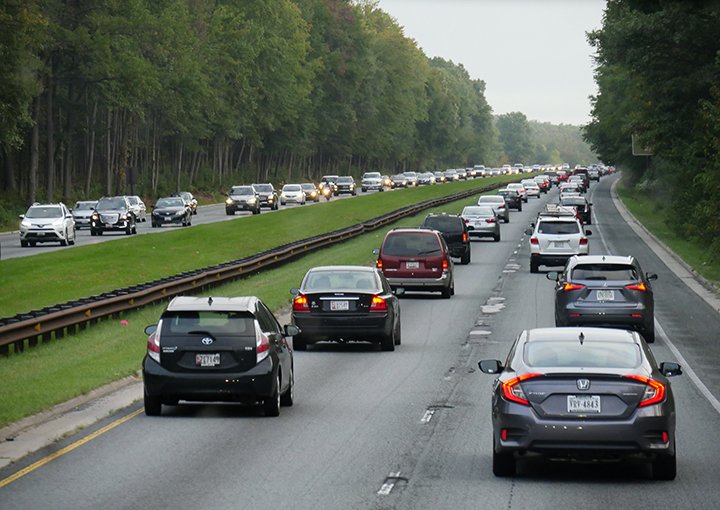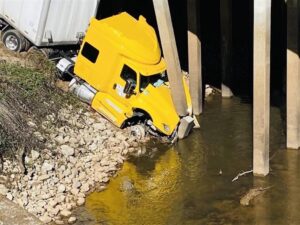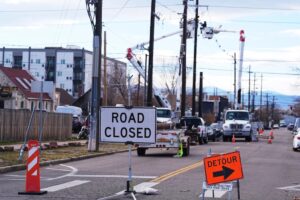BALTIMORE — The rate of congestion, travel volume and pavement deterioration on Maryland’s Interstate Highway System are among the highest in the nation, according to an August report by TRIP, a private nonprofit that researches, evaluates and distributes economic and technical data about surface transportation issues.
The report, Restoring Maryland’s Interstate Highway System: Meeting Maryland’s Transportation Needs with a Reliable, Safe & Well-Maintained National Highway Network, reviews the use, condition and benefits of Maryland’s Interstate system. Click here to view or download a PDF of the report.
Between 2000 and 2018, traffic on Maryland’s interstate increased at a rate of 18%, nine time faster than the increase in new lane capacity (2%), according to the report. As a result, Maryland’s interstates are the second busiest — and the second most congested at 82% — in the U.S. The heavy use of Maryland’s roads has led to increased deterioration on the state’s interstate highways, and 5% of the state’s interstate pavement is in “poor” condition, placing the state the 11th highest in the nation. Travel on Maryland’s interstate highways is tallied at 20,055 miles per lane per day, the second highest in the U.S. behind California at 86%. While Maryland’s interstate highway system accounts for only 4% of the total roadway lane miles in the state, the system carries 30% of the state’s vehicle travel.
TRIP’s report identifies the busiest portions of Maryland’s interstate system, including two sections of Interstate 270, two sections of Interstate 495 and a portion of Interstate 95/495. The TRIP report also identifies the most congested segments of freeways or expressways in Maryland during morning and afternoon peak travel times, the vast majority of which are on the state’s interstate highways.
As the aging Interstate system’s foundations continue to deteriorate, most interstate highways, bridges and interchanges will need to be rebuilt or replaced. Continuing to resurface the highways, rather than addressing underlying foundational issues, will provide diminishing returns and result in shorter periods of pavement smoothness, according to TRIP. Six percent of Maryland’s Interstate pavements are rated in “mediocre” condition, 8% are in “fair” condition and the remaining 80% are in “good” condition.
The report also shows that 2% of Maryland’s interstate bridges are rated in “poor/structurally deficient” condition. A bridge is rated as “poor/structurally deficient” if there is significant deterioration of the bridge deck, supports or other major components. Seventy-two percent of the state’s interstate bridges are rated in “fair” condition and the remaining 26% are in “good” condition. Twenty-two percent of Maryland’s Interstate bridges need repair or replacement, the report states, and 52% of the state’s interstate brides are 50 years or older.
The design of Maryland’s interstate system — which includes a separation from other roads and rail lines, a minimum of four lanes, paved shoulders and median barriers — makes the state’s interstates more than two-and-a-half times safer to travel on as all other roadways. The fatality rate per 100 million vehicle miles of travel on Maryland’s Interstate in 2018 was 0.40 compared to 1.03 on the state’s non-Interstate routes. TRIP estimates that additional safety features on the interstate system saved 108 lives in 2018: While Maryland’s interstate highway system carried 30% of the state’s travel in 2018, it accounted for only 14% of the state’s traffic fatalities as a result of superior safety features, according to TRIP.
Restoring and upgrading Maryland’s interstate system to meet the 21st-century transportation needs will require strong federal leadership and a robust federal-state partnership to reestablish the Interstate Highway System as the nation’s premier transportation network, TRIP says. The current federal surface transportation program, Fixing America’s Surface Transportation (FAST Act), the primary source of interstate highway funding, expires Sept. 30, and the reauthorization of a new long-term, adequately and reliably funded long-term federal program will be needed to ensure that a strong federal program supports the restoration of the interstate system. However, reductions in vehicle travel due to the COVID-19 pandemic is predicted to reduce state transportation revenues by about $16 billion in 2020 —and by $37 billion over a five-year period — reducing states’ ability to invest in repairs and improvement.
Based on the findings of a 2019 report by the Transportation Research Board (TRB) that was requested by Congress, TRIP has provided recommendations for the restoration of Maryland’s interstate system, which include:
- Foundational reconstruction of interstate highways, bridges and interchanges;
- Improvement to roadway safety features;
- System right-sizing, including upgrading of some roadway corridors to Interstate standards;
- Adding needed additional highway capacity on existing routes;
- Adding additional corridors; and
- Modifying some urban segments to maintain connectivity while remediating economic and social disruption.
“The long-term vision that helped establish the current Interstate system nearly 65 years ago is needed again today,” said Dave Kearby, executive director of TRIP. “In order to rebuild the nation’s economy, maintain personal and commercial mobility, and improve quality of life, adequate transportation investment and a sustainable, long-term funding source for the federal surface transportation program must remain a priority.”
The Trucker News Staff produces engaging content for not only TheTrucker.com, but also The Trucker Newspaper, which has been serving the trucking industry for more than 30 years. With a focus on drivers, the Trucker News Staff aims to provide relevant, objective content pertaining to the trucking segment of the transportation industry. The Trucker News Staff is based in Little Rock, Arkansas.















